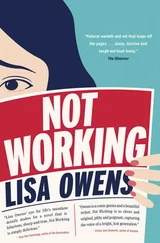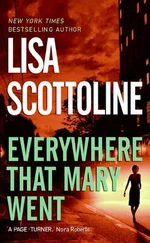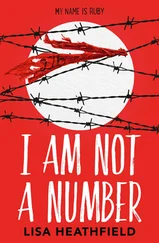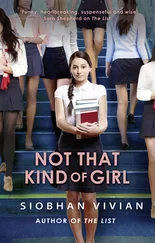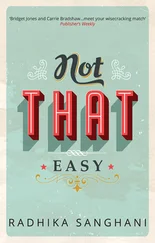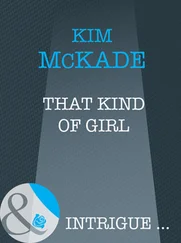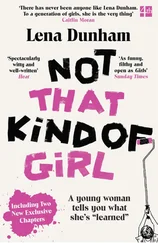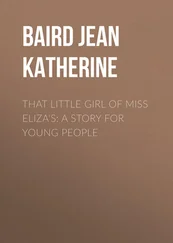Mum never talked about it properly to me: the usual way of dealing with things in our family was to try and ignore them. She never said it was OK for her to have a boyfriend and she was entitled to some happiness and a loving relationship. All she ever said was that no one wanted her because of me. Imagine having that on your shoulders all your life. For her part, she felt she had to compensate, to make sure I missed out on nothing because I didn’t have a dad. I ruled the roost. From the day I was born I controlled her life. Obviously any baby and small child must be the first priority, but Mum lost herself completely the day I was born.
The Rockingham Estate at the Elephant and Castle was where I grew up, living with Mum, Nan and Grandad at 15 Stephenson House. The estate is a collection of red-brick, four-storey blocks of flats built in the 1950s, with scrubby, worn grass in between. To get to our flat we had to go up two flights of stairs and then walk along the balcony in front. We were round the corner of the building, the last stretch of balcony, so quite private.
It was a comfortable home and a good place to grow up. Nowadays estates like this are rough, with gangs and the associated drugs and violence, but when I was little the only ‘gang’ was the knot of kids I played with – endless games of ‘Penny Up’, ‘Cannon’ or ‘Run Outs’. We ebbed and flowed around the area between the flats, hiding and chasing each other all day through the school holidays until our mothers stood out on balconies calling us in for tea, which was what the evening meal was called (‘dinner’ was served at midday). Next to the estate was the strangely named Jail Park (I think it got its name because it was beside the Inner London Sessions court) and this, too, was a safe playground.
Mum has an old black-and-white photo of the Coronation party held on the estate in 1953. All the mums and teenagers stand in the background while 50 kids sit at a great long table, stuffing themselves with jelly and ice cream. It seems like a different era, an age when neighbours looked out for each other and everyone helped out, but it was only 10 years before I was born and the estate was still a friendly, caring place to grow up. At least, that’s how it seemed to me.
Because it was a council estate all the front doors were painted the same colour: red. To this day whenever I move into a new house the first thing I do is change the colour of the front door just because I can. The only bit that scared me was the stairwell: the stairs were made of concrete with sparkly bits in it – for some reason, you only see this in council flats of that age. Yellow tiles ran halfway up the walls. There was no graffiti and it didn’t smell like a public urinal but it was dark and grubby and made me nervous. I don’t know what I thought would happen but I used to run up those stairs as fast as I could, often shouting, ‘Come on, Billy, there’s a good Alsatian!’ to my protector, an imaginary dog.
Our flat had three bedrooms, a living room, kitchen and bathroom. When I was really small my Uncle Alan lived there too. But let’s go back to the very beginning. How did I come to be living with Nan and Grandad and sharing a room with Mum?
Let’s start with Nan and Grandad. They were such an important part of my life. A typical working-class couple, they were strong characters. Grandad drove a road sweeper for the council, which was a bit embarrassing because he parked this big yellow-and-black vehicle near our flats – I think he even went down the pub in it. He also did planting for the council in Battersea Park. He liked his work, and we had window boxes at home. Grandad won an award for the best window boxes on the estate – I’ve a feeling we were perhaps the only people there who had them.
Grandad’s shoes were always immaculate and he stored them in a little cabinet with all his kit for cleaning them. In cold weather he wore a flat cap. He had a tiny moustache, a bit like a Hitler moustache, like a bit of black tape stuck under his nose. For years I never had a clue what colour his hair was because it was Brylcreemed down. It was only when he was old that I could tell it was grey underneath. He rolled his own cigarettes with Golden Virginia tobacco, but Nan never smoked. Mum still has his toolbox with the nails and screws sorted and stored in old tobacco tins.
Nan and Grandad met when they were young, childhood sweethearts. He was the only man she’d ever been with. Her family was very poor, but his were a bit better off because his mother was a moneylender. In the old photos I’ve seen they look quite smart and Nan’s family seem really ragged in comparison. Grandad (Jim Maxwell) was a cheeky lad: his nickname was ‘Bagwash’ because there was a laundry round where he lived called ‘Maxwell Bagwash’. He saw this young girl (Rose) eating chips and said, ‘Give us a chip, Ginge’ – he called her ‘Ginge’ because there’s a bit of ginger colouring in her family, and as Nan grew older and greyer she always had her hair tinted a reddish colour. Alan was born ginger, and there were lots of jokes about how he must be the milkman’s, but it’s in the family. When they got married Grandad’s family felt he could have done better for himself, but he and Nan were together for the rest of their lives.
They both worked hard – Grandad was still working when he died at 76. Nan was always doing jobs and usually more than one: cleaning, working at the bookies. Their social life revolved around the pub. Nan was musical, and it’s fair to say she had a showing-off gene (in case you’re wondering where I get it from). She taught herself to play the piano by ear, never had a lesson, and would belt out songs like ‘Tommy Tucker’ and ‘Slap a Bit of Treacle on Your Pudding, Mary Ann’. She loved it, and that’s why she insisted Mum should look after me at weekends – nothing, not even me whom she idolised, could get in the way of their time down the pub. Nan loved having an audience in the palm of her hand. Everyone in the pub knew each other, knew all about their kids, there was a great sense of community.
I can still sing all her good old London songs. Nan was singing until she was in her eighties and perfected the same throaty wobble in her voice on a big note that Vera Lynn had. In April 2003, when I was the subject of This Is Your Life, she had Michael Aspel eating out of her hand and insisted on singing, finally getting her break on national television. As she got older and her voice wasn’t so strong, she would hold the mike too close (which gave a fuzzy edge to the sound), but my memories are of her belting the words out.
Nan was of average height (there’s nobody else in our family who is small like me) and the only make-up she ever wore was lipstick, which to be perfectly honest was never expertly applied. Let’s just say her lipstick thought her lips were bigger than they were. At home she wore a pink nylon overall, the sort of thing only Nans had.
So that’s Nan and Grandad, and now it’s Mum’s turn. Obviously I wasn’t around when all this happened, but eventually, years after my childhood, I heard it from her. It was not easy for Mum to tell her story, or to live it either: life on the estate may have been safer and friendlier in those days, but people were also a lot more judgemental and it was tough for a single mother. Her story has been shrouded in shame and half-truths for most of my life. In fact, it’s only in the past few years that I’ve managed to piece it all together.
My mum Val is the second eldest of Nan and Grandad’s four children: Shirley was four years older and after Mum came Jim and Alan. As a small child Shirley had TB, and at 18 months she went into hospital and only left when she was six. When she came home she thought Nan and Grandad were a nurse and a doctor; it was ages before she called them ‘Mum’ and ‘Dad’ again, and they were overjoyed when she did. This was at a time when families could only visit children in hospital for a couple of hours every day so it must have been very hard on them all. Val always felt Shirley was the favourite, and perhaps she was because of what she’d been through. Anyway, she was the one who could do no wrong and I think in a way both she and Mum fell into their roles: Shirley did everything right, while Val was the rebellious, cheeky one.
Читать дальше

